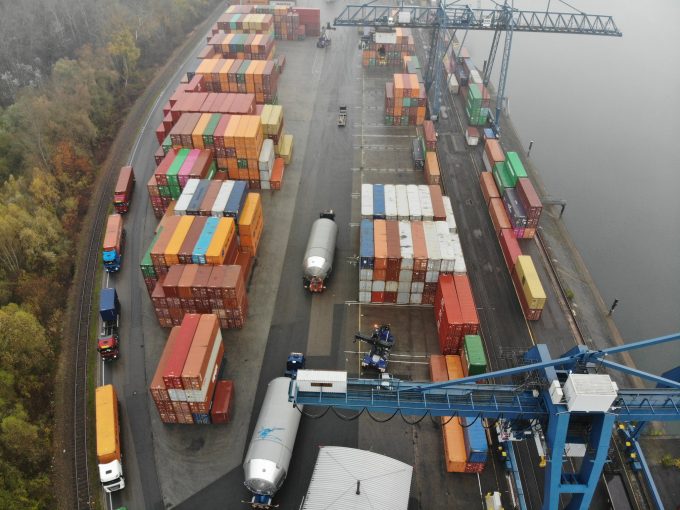'Usual' shortage of seasonal workers creating delays on Europe's waterways
Shortages of seasonal workers have prompted delays across Europe’s inland waterways, leaving many in the ...
TFII: SOLID AS USUALMAERSK: WEAKENINGF: FALLING OFF A CLIFFAAPL: 'BOTTLENECK IN MAINLAND CHINA'AAPL: CHINA TRENDSDHL: GROWTH CAPEXR: ANOTHER SOLID DELIVERYMFT: HERE COMES THE FALLDSV: LOOK AT SCHENKER PERFORMANCEUPS: A WAVE OF DOWNGRADES DSV: BARGAIN BINKNX: EARNINGS OUTODFL: RISING AND FALLING AND THEN RISING
TFII: SOLID AS USUALMAERSK: WEAKENINGF: FALLING OFF A CLIFFAAPL: 'BOTTLENECK IN MAINLAND CHINA'AAPL: CHINA TRENDSDHL: GROWTH CAPEXR: ANOTHER SOLID DELIVERYMFT: HERE COMES THE FALLDSV: LOOK AT SCHENKER PERFORMANCEUPS: A WAVE OF DOWNGRADES DSV: BARGAIN BINKNX: EARNINGS OUTODFL: RISING AND FALLING AND THEN RISING

Handling times may have halved in a week, but this masks a deteriorating situation along North Europe’s inland waterways.
Low water levels mean barges are less likely to be able to carry full loads.
Contargo is reporting wait times of just 36 hours, the lowest this year, for Rotterdam, close to half the 71 hours recorded just seven days earlier, but the barge operator noted: “Water levels on the Rhine are continuing to go down.
“In the next few days, a level below 80cm is forecast for the Kaub gauge. From this level downward, our barges – depending on type – can only transport around 27% of capacity, and our costs increase as a result.”
The operator announced that, should levels fall below 81cm, it would implement a “low-water surcharge” of €175 per teu and €225 for 40ft containers.
However, one barge owner said low water was not a major long-term issue affecting the region’s inland waterways, instead what was perpetuating “poor services” was the failure of port owners to adequately invest.
“Rail infrastructure is insufficient to meet demand that, over a 20-year period, has gone from post-panamax capacities of 8,000 teu to ULCVs of 24,000 teu,” he told The Loadstar.
“Added to this, berth capacity has not been expanded to meet this increase, nor has yard capacity been adjusted from the post-panamax average of 4,000-5,000 moves to the ULCV average of 12,000-15,000.”
The source said this had led to delays of anywhere from 36 to 80 hours being considered “normal”.
To fix this, operators say, the industry needs stakeholders to exchange information and to work more collaboratively, bolstering infrastructure, with a particular focus on developing rail tracks and berth capacity.
“What we are seeing is seeming indifference from these stakeholders to addressing these problems,” the barge owner said.
“The barge operators invoice congestion surcharges, then shipping lines recover the storage cost and barge congestion charges and add demurrage andnport congestion surcharges, low-sulphur surcharges, SPS [port security] and bunker surcharges.”
Comment on this article
Michel van Dijk
December 07, 2021 at 8:31 amOld news, Kaub is already at 242 again this morning so no worries about transport capacities. It is not the size of the terminals in the ports it is the split between deepsea, transshipment and barges on the quay that influences the productivity of the terminal. If the terminals would have more space there would be far more transshipment in order to regain better rotations for the Ultra Large Vessels. This would make things even worse. Only measurement to make impact is keeping the productivity high. The way to do is not only in the descission of the Carrier but also in the contracts for carriage and all specific regulations who impact behaviour of the individual cargo.